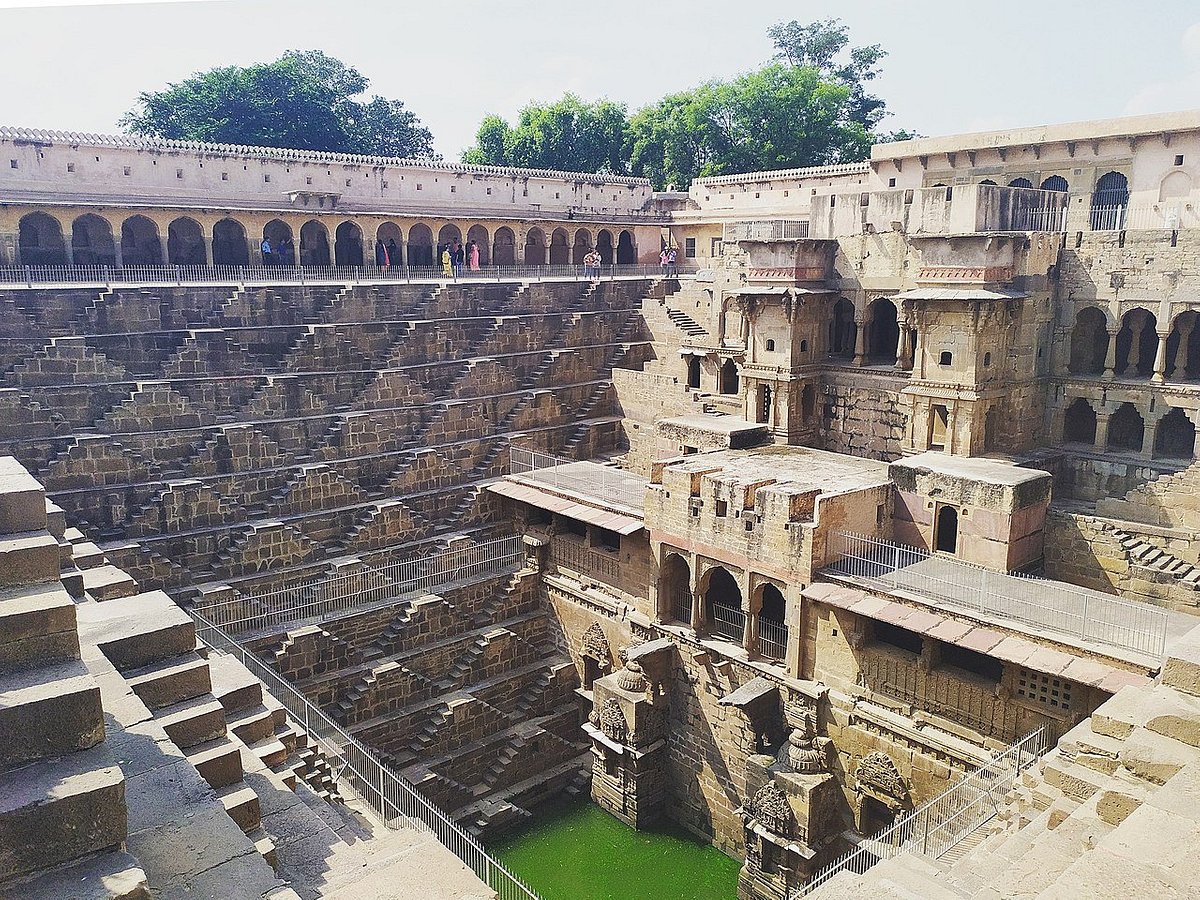Rajasthan, the land of royal heritage and majestic palaces, harbors a treasure trove of architectural wonders known as stepwells. These enigmatic structures, also called baoris or bawdis, stand as testament to a rich history and innovative engineering prowess. Embodying a unique blend of functionality and intricate design, Rajasthan’s stepwells are not just utilitarian but architectural marvels that speak volumes about the region’s cultural and historical significance.
Origins and Purpose
Stepwells are ancient water storage systems characterized by their distinctive architecture featuring a series of steps leading down to the water level. They served as essential sources of water in the arid landscape of Rajasthan, allowing communities to access water even during scorching summers. These stepwells were not merely utilitarian; they were community spaces where people gathered, socialized, and performed rituals. Many stepwells were also sites of religious importance, adorned with ornate carvings and sculptures.
Architectural Splendor
Rajasthan’s stepwells are a testament to the architectural brilliance of the bygone era. Ranging from simple designs to intricate, multi-story structures, these wells showcase the mastery of ancient craftsmen. The intricate carvings, symmetrical patterns, and elaborate motifs adorning the walls narrate stories of religious beliefs, folklore, and daily life. The deeper one descends, the cooler the environment becomes, showcasing an ingenious natural cooling system designed to combat the region’s blistering heat.
Iconic Stepwells of Rajasthan
1. Chand Baori: Located in Abhaneri village near Jaipur, Chand Baori is one of the most famous stepwells in Rajasthan. With over 3,500 steps arranged in perfect symmetry, it’s an architectural spectacle that captivates visitors with its sheer magnitude and intricate design.
![Chand Baori (Step well), Abhaneri - Tripadvisor]()
image credits: tripadvisor
2. Rani Ki Vav: Recognized as a UNESCO World Heritage Site, Rani Ki Vav in Patan, Gujarat (historically part of Rajasthan), is a stunning example of Maru-Gurjara architecture. This stepwell is adorned with over 800 intricate sculptures, showcasing exceptional craftsmanship.
![Travel Articles | Travel Blogs | Travel News & Information | Travel Guide | India.comFrom Agrasen Ki Baoli To Rani Ki Vav, These 5 Magnificent Stepwells In India Should Be On Your Bucket List]()
image credits: India.com
3. Toorji Ka Jhalra: Nestled in the heart of Jodhpur, Toorji Ka Jhalra is a hidden gem boasting a striking blue hue, a characteristic feature of Jodhpur’s architecture. The stepwell has been beautifully restored, attracting both locals and tourists alike.
![Toorji Ka Jhalra (Toorji's Step Well), Jodhpur - Tripadvisor]()
image credits Tripadvisor
Preservation Efforts
While these stepwells are awe-inspiring, many have fallen into disrepair over the centuries due to neglect and environmental factors. Recognizing their historical significance, various conservation efforts have been initiated by both governmental and non-governmental organizations. Restoration projects aim to not only preserve these architectural gems but also revitalize them as tourist attractions, ensuring their legacy lives on for generations to come.
Legacy and Cultural Significance
Beyond their architectural beauty, stepwells hold immense cultural value. They are repositories of local history, traditions, and community life. These structures stand as testaments to the engineering ingenuity of ancient societies and serve as reminders of the importance of sustainable water management practices.
Conclusion
Rajasthan’s stepwells are not just reservoirs of water; they are reservoirs of history, culture, and artistry. Their stunning architecture and historical significance make them an integral part of India’s architectural heritage. As these timeless structures continue to captivate the imagination of visitors, their preservation stands as a testament to Rajasthan’s rich cultural legacy and the remarkable engineering prowess of its ancestors. Exploring these stepwells unveils a world where history, architecture, and community converge, offering a glimpse into the vibrant tapestry of Rajasthan’s past.




